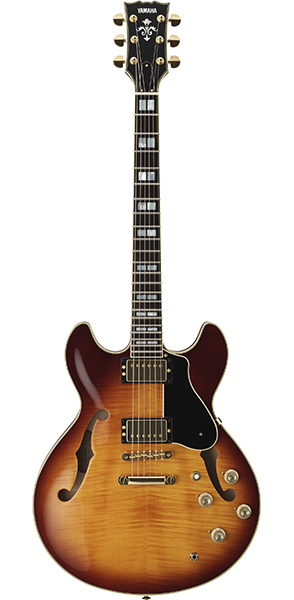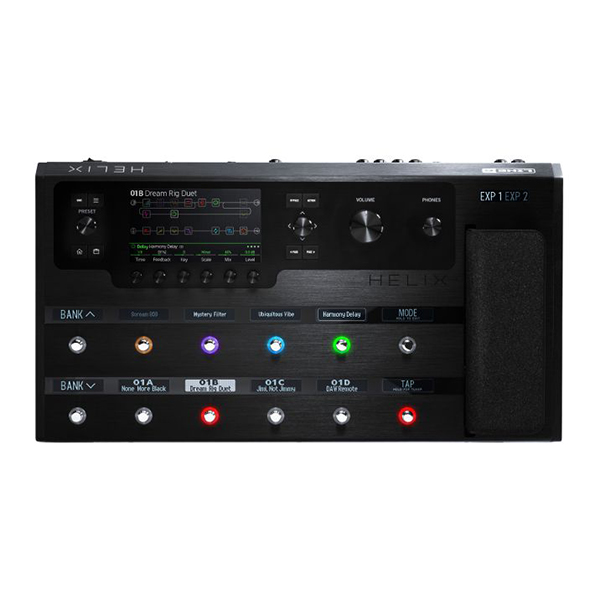This month we’re going to be jamming over a funky D7(#9) progression.
In fact, all three chords in this progression are altered dominant 7th chords with a sharp ninth alteration.
These chords are often referred to as the “Hendrix” chord. Think of the song “Purple Haze” and you’ll understand why.
The tonal center resolution point of this two-bar progression is towards the first chord, D7(#9).
How do we improvise over these altered dominant chords though? Let’s look at the chord tones in the D7(#9) chord to find a scale that might work well for this month’s jam.
D7(#9)
D = Root
F# = Major Third
A = Perfect Fifth (not used in the standard 5th string root voicing)
C = Minor Seventh
E# = Sharp Ninth ( Yes, E Sharp! This is the correct term for a raised E note on this chord) (F would be the enharmonic equivalent name.)
In effect, we have a dominant chord with a major third, and a minor third interval within it. (The sharp nine, would also be the same pitch, or referred to as enharmonic to a minor third interval.)
When we listen to these consonant/dissonant type of chords, the sharpened ninth dominates the major third, and the tonality of the chord. Through experience I’ve learnt that leaning towards the minor tonality is a much better approach than trying to target the major third.
Let’s take a look at all three chords in our progression now, and then determine a scale, or scales that we can use for our lines and licks.
The Chord Progression
This month’s two-bar chord sequence contains these three chords;
I7(#9) II7(#9) V7(#9)
II: D7(#9) I E7(#9) A7(#9) :II
In effect, we have a I – II – V – I altered dominant progression with a tonal center of the D7(#9) Chord.
The progression only moves away from the tonal center chord for one measure, so we’ll be able to play through those chords, and let their inherent harmonic dissonance work in our favor, without having to specifically target those tones.
So what scale or scales would be a good choice for this jam session?
The Solo Protocol
The Blues Scale is a great scale choice for improvisations over a dominant seventh with a sharp nine. So, for our examples this month we’re going to use the D Blues Scale.
Let’s lay those scale tones out and see why those notes are going to work so well. (I’ve bolded the scale tones that are also chord tone equivalents)
The D Blues Scale = D – F – G – Ab – A – C (F is enharmonic to E#)
The D7(#9) Chord =. D – E#- F#- A – C
The D Blues Scale = D – F – G – Ab – A – C (G is enharmonic to Fx)
The E7(#9) Chord =. E – Fx – G#- A – B – D
The D Blues Scale = D – F – G – Ab – A – C (C is enharmonic to B#)
The A7(#9) Chord =. A – B#- C#- D – E – G
As we can see the D Blues Scale gives us four chord-tones over the D7(#9) and A7(#9) … and three chord-tones over the E7(#9) chord.
You’ll notice that I’m starting most of my phrases on the upbeat of one, as this adds a slinkier feel to these lines.
We’ll want to resolve our lines towards the tonal center chord and make sure we create phrases that fall within the two measures we’re given to trade our licks together.
Working within strict parameters will hone your chops, and help you define shorter phrases on the fly.
You’ll also notice that I use the A Blues Scale for Lick 3. I then re-use the same phrase rhythmically within the D Blues Scale for Lick 5.
This is a great way to expand your vocabulary without working too hard.
Assignment; Take a moment to analyze why the A Blues Scale works so well over these chords too.
Staying on Track
You’ll notice that I’m playing the rhythm guitar part in the spaces I’ve left for you to play your phrases.
Take a moment to learn the rhythm guitar parts. Perhaps you could play those when I’m playing my licks.
Remember to package your lines within the spaces I’ve left for you. It’s going to be tricky at first, but you’ll develop invaluable chops if you adhere to these protocols.
Jam with me in the video for the next month, and I think you’ll find exponential growth within your two-bar phrases.
O.k., let’s get down to business and jam.
Robbie Calvo – https://www.tradinglicks.pro
__________________________________________________________________



